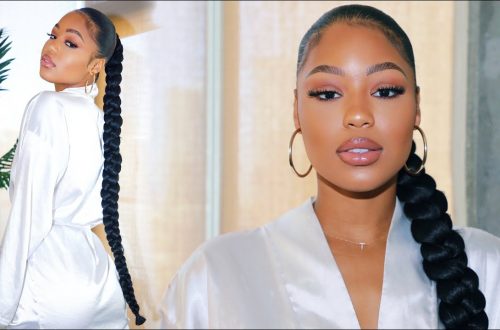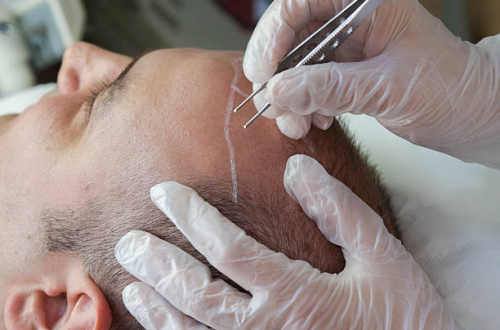Your hair is a reflection of your unique beauty, but understanding how to care for it can sometimes feel overwhelming. With so many hair types, textures, and needs, finding the right routine requires understanding the fundamentals and tailoring your approach. This ultimate guide breaks down haircare for straight, wavy, curly, and coily hair, empowering you to achieve healthy, radiant locks that shine.
Table of Contents
Understanding Hair Types: Beyond the Basics
The foundation of great hair care is knowing your hair type. Here’s a breakdown of the main categories and their subtypes:
- Type 1: Straight Hair
- 1A: Stick-straight, fine texture
- 1B: Straight with slight bends
- 1C: Straight with a coarser texture
- Type 2: Wavy Hair
- 2A: Fine, loose waves
- 2B: Pronounced, S-shaped waves
- 2C: Defined waves bordering on curls
- Type 3: Curly Hair
- 3A: Large, loose curls
- 3B: Tight, springy curls
- 3C: Corkscrew curls
- Type 4: Coily Hair
- 4A: Dense, S-shaped coils
- 4B: Tight, zigzag coils
- 4C: Extremely tight, barely defined coils
Important note: It’s common to have multiple hair types or textures on different parts of your head!
Hair Care Essentials: The Universal Rules
Regardless of hair type, these practices will benefit everyone:
Regardless of hair type, these practices will benefit everyone:
Focus on scalp health
Your scalp is the foundation of healthy hair. Think of it as the soil from which your hair grows. A healthy scalp environment supports strong hair follicles and encourages growth. Use gentle, sulfate-free shampoos that avoid harsh ingredients that can strip natural oils and irritate sensitive scalps. Massaging your scalp regularly improves blood circulation, bringing nutrients and oxygen to the hair roots.
Minimize heat styling
While tempting to achieve sleek blowouts and perfect curls, excessive heat exposure is a recipe for damage. Heat styling tools break down the hair’s internal structure, leading to dryness, split ends, and breakage. Whenever possible, air-drying is your best friend. If you must use heat, always apply a high-quality heat protectant spray beforehand and keep temperature settings as low as possible.
Don’t over-wash
Stripping your hair of its natural oils daily can lead to a vicious cycle of overproduction, leaving you with an oily scalp and dry ends. Most hair types benefit from washing every 2-3 days. This allows your scalp to maintain a healthy oil balance, keeping your hair moisturized. Experiment to find the perfect wash schedule that keeps your hair feeling clean and healthy.
Hydration is key
Just like your skin, your hair craves moisture. Conditioners replenish hydration lost during washing, making your hair smoother and less prone to tangles. For extra pampering, deep condition once a week with a hair mask that suits your hair type. Leave-in treatments add an extra layer of protection and moisture throughout the day.
Protect from the elements
Environmental factors like harsh sun, wind, salt water, and chlorine can wreak havoc on your locks. Wear hats for prolonged sun exposure and use hair care products with UV filters for added protection. After swimming, rinse your hair promptly to remove salt or chlorine, which can be exceptionally drying.
Tailoring Your Routine: Specific Hair Type Needs
Type 1: Straight Hair
- Challenge: Straight hair tends to get oily near the roots and lack volume throughout. This can lead to a flat, limp appearance.
- Solutions: Volumizing shampoos and conditioners add body and lift without weighing hair down. Dry shampoo is a lifesaver between washes, absorbing excess oil and boosting texture. Embrace haircuts with layers that add movement and dimension. Texturizing sprays and mousses create a tousled, beachy look with extra volume. However, avoid heavy styling products, oils, and serums, as they can make your hair appear greasy.
Type 2: Wavy Hair
- Challenge: Wavy hair craves definition and fights against frizz. It’s a delicate balance – too much product can weigh waves down, while too little leaves them undefined.
- Solutions: Invest in products specifically designed for wavy hair to enhance your natural pattern. After washing, scrunch in styling gels or light creams to encourage a defined wave shape. Opt for air-drying when possible, or use a diffuser on a low heat setting to minimize frizz. Sleeping on a satin pillowcase reduces friction, keeping your waves smoother and less prone to frizz throughout the night.
Type 3: Curly Hair
- Challenge: Curly hair is naturally prone to dryness, making it susceptible to breakage and loss of curl definition.
- Solutions: Deep conditioning is your best friend. Maintain a regular deep conditioning routine to replenish lost moisture. Leave-in conditioners provide hydration throughout the day. For definition and hold, opt for styling creams and gels designed for curls. Avoid brushing dry hair – use your fingers or a wide-tooth comb to minimize disruption and keep your curls intact. Protective styles like braids or twists help reduce manipulation and prevent breakage.
Type 4: Coily Hair
- Challenge: Coily hair experiences the most extreme dryness and can suffer a significant loss of length due to shrinkage.
- Solutions: Deep conditioning and hair masks are essential for keeping coily hair healthy and hydrated. Embrace the LOC method (Leave-in, Oil, Cream) to seal in moisture for long-lasting hydration. Pre-shampoo treatments with oils like coconut or avocado lock in moisture before the washing process. Styling in protective styles like twists, braids, or updos minimizes manipulation, which helps prevent tangling and breakage.
Product Recommendations & Natural Solutions
Alongside store-bought hair care products, nature provides a bounty of ingredients that can nourish and enhance your hair’s health. Here are some powerful natural solutions and how they benefit different hair types:
Aloe Vera
Aloe vera is prized for its soothing and moisturizing properties. This succulent powerhouse contains vitamins and minerals that promote a healthy scalp environment. It can help calm itchiness or irritation, making it especially beneficial for sensitive scalps. Aloe vera also has hydrating qualities, adding a dose of moisture to dry or lackluster hair.
Coconut Oil
Coconut oil is a beloved hair treatment, particularly for curly and coily hair types (types 3 & 4). Its richness makes it an excellent conditioner for intensely dry hair. Coconut oil helps smooth the hair shaft, reducing frizz and adding shine. Due to its density, it’s best used in moderation, especially for those with finer hair textures.
Avocado Oil
Rich in healthy fats and vitamins, avocado oil strengthens hair and helps prevent breakage. It’s ideal for all hair types, adding a boost of shine and nourishment. It’s especially helpful if you have dry, damaged hair as it can deeply penetrate the hair shaft to provide lasting moisture.
Apple Cider Vinegar
Apple cider vinegar (ACV) serves as a natural hair clarifier. It helps remove product build-up and balances the scalp’s pH levels. This can be helpful if you find your hair gets oily quickly or feels weighed down. It’s important to always dilute apple cider vinegar before applying it to your scalp and hair, and to use it in moderation to avoid over-stripping your hair’s natural oils.
Important Note: Always patch-test natural ingredients before applying them liberally to your scalp or hair to make sure you don’t have any sensitivities.
Want to learn more about using these ingredients for healthy hair? Explore the guide on how to take care of your hair for expert tips.






